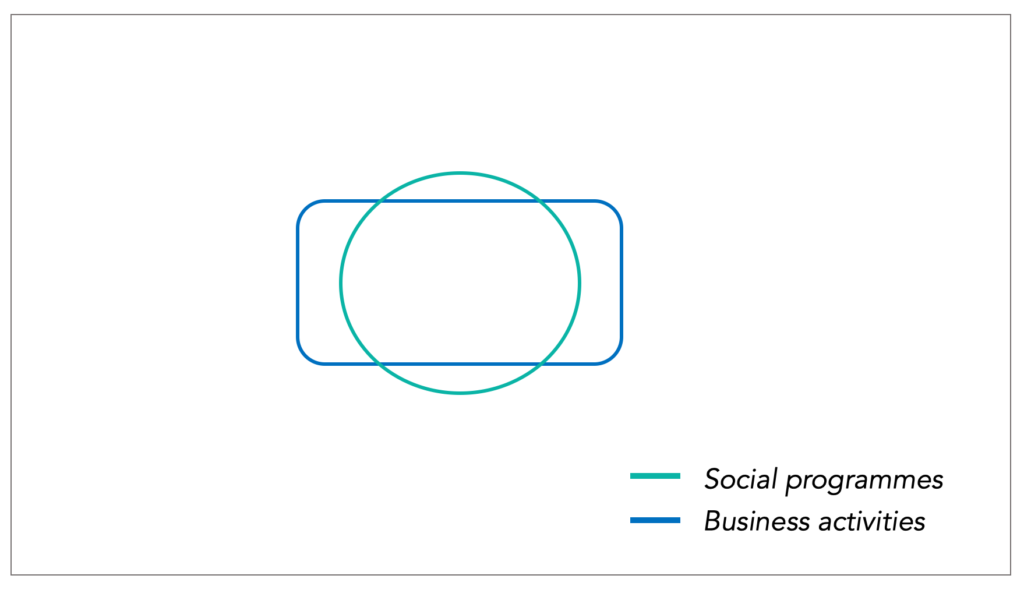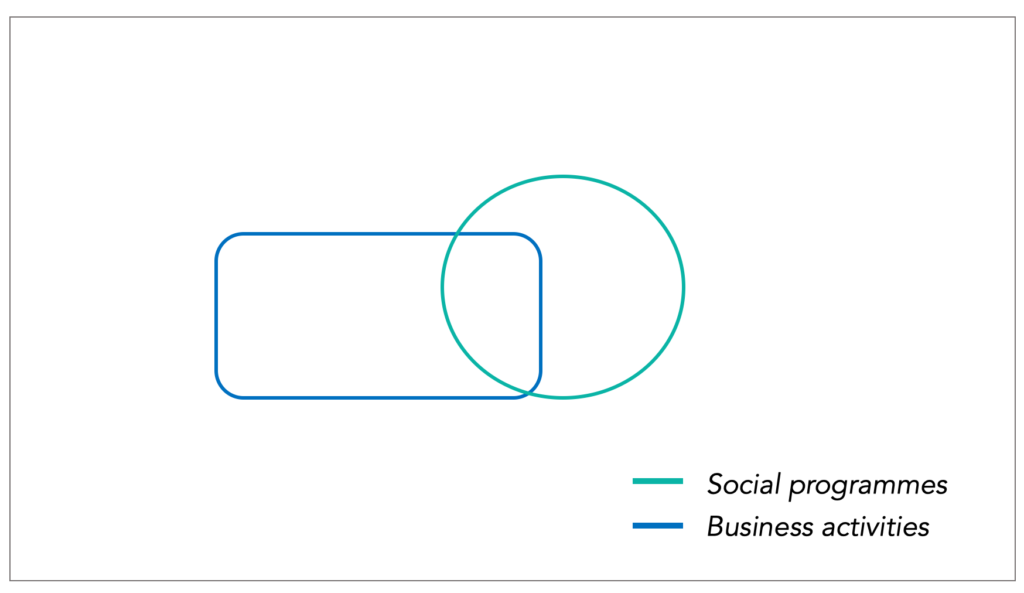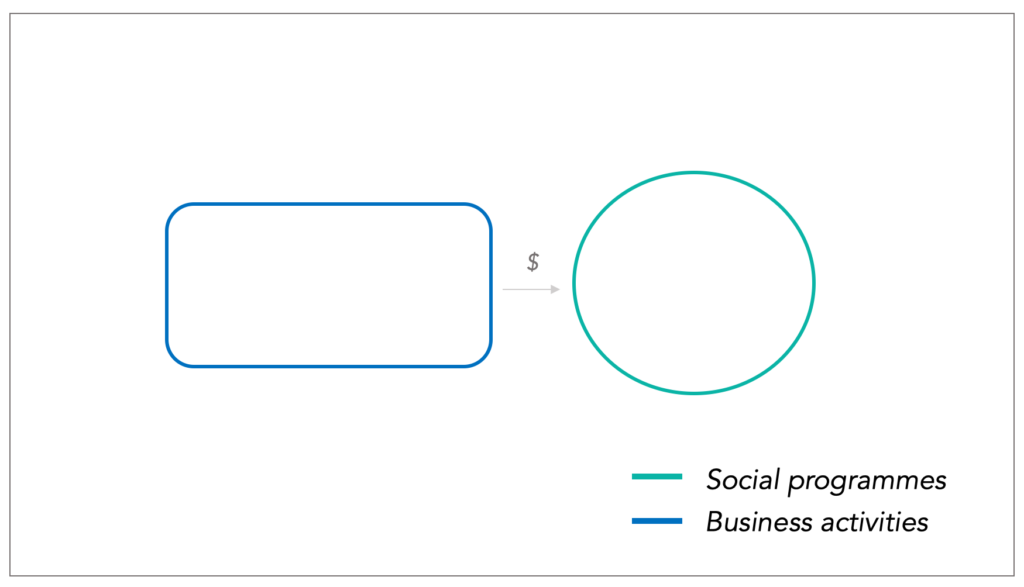
Organizational models for social enterprises
Embedded, separated and integrated models
The emergence of social enterprises and revenue-generating activities in the non-profit sector redefined the way changemakers are now tackling . As a consequence, several organizations started to combine business principles and impact missions in new ways. In this article, we take a look at the 3 main organizational models for social enterprises and help you navigate through them.
What is an organizational model?
Before digging into the topic, let’s make it clear what we consider as “organizational model“. Traditionally, an organizational model is seen as “a system outlining how certain activities are directed in order to achieve the goals of an organization” (Investopedia). It basically describes how the work flows through an organization.
Now, for for-profit companies, organizational models (or “structures”) define roles, responsibilities, links among departments, as well as the general hierarchy within the firm. Obviously, the chosen structure must align each part of the organization and make sure they all contribute achieving strategic business goals.





However, when it comes to social entrepreneurship, it all gets a little bit more complicated. As a matter of fact, apart from creating economic value, social enterprises create social value too. At every stage of their lives, these enterprises need to find a balance between social programmes and business activities.
Said Malki (2009) was among the first scholars to provide a classification of social enterprises, based on their business/program integration. He identified three main organizational models: embedded, integrated and separated.
Let’s dive and break down each one of them in the following sections.
Embedded model
In the embedded model, business activities have a direct, positive impact towards achieving the organization’s social impact mission. Because of that, entrepreneurial activities are core to the mission.
What happens is that social enterprises create and sell products/services to directly solve the social problem tackled. In other words, their social and business programs are one and the same. Specialisterne or Sanergy are just couple examples of companies using an embedded model, in which financial benefits and social impact are achieved simultaneously.





Integrated model
A slightly different approach could be the integrated model. Here, social and business programs are connected, but aren’t exactly the same thing.
On one hand, these programs share assets, costs, expertise, even personnel. So, there is a crossover among the two categories. Yet, even though the products/services sold relate (at least to a certain extent) to the organization’s mission, they do not directly solve the social problem addressed by the organization. This is because enterprise activities act as funding mechanism: they help the organization generate funds necessary to keep the mission programs up and running.





This is usually the case of companies such as Aravind Eye Care Hospital. As a matter of fact, each enterprise serves two diverse targets and charges a premium to one segment in order to subsidize the other.
Separated model
Last, but not least: the separated (or external) model. In a separated model, social programs and business activities are distinct, with little or no connection with each other.
In fact, enterprise activities are unrelated to the mission, being usually organized as profit centers or separated entities (subsidiaries) of the organization. Like in integrated models, business activities are a funding mechanism, but do not share costs or assets with social programs. This is why we said they are not connected one another.





Here is a fun fact for you. The luxury company Rolex donates all its profits to its parent company, Wilsdorf Foundation, that supports cultural and social initiatives of all kinds. Technically, this is an example of separated model, with a subsidiary generating funds to further another organization’s social mission. You would have never said that, right?
Conclusion
In this article, we started to get a bit more familiar with organizational models for social enterprises. In particular, we focused on embedded, integrated and separated models. As seen, each model has a very diverse degree of connection between their business activities and their social programs.
Even though any of these models could potentially work just fine, it’s important for a social entrepreneur to delve into the implications of each. Feel free to compare organizational models with the business models we discussed in this article. Eventually, this will help you choose the most suitable one for your social enterprise!
Did you like this article?
If so, then don’t forget to check out for more at Social Business Design.